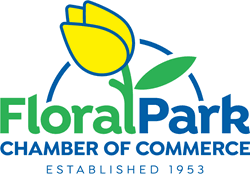This Is How Small Business Owners Can Keep Their Cash Flow Healthy
You can have great products, loyal customers, and strong sales — but if cash flow isn’t managed well, your business can still stumble. Cash flow is the heartbeat of a small business, and keeping it steady is essential for both survival and growth. Below are strategies you can use to stabilize your finances and plan confidently for the future.
Why Cash Flow Matters
Think of cash flow as your daily oxygen. Unlike profit — which shows on paper after expenses are subtracted — cash flow tells you whether you actually have money available to cover bills, pay staff, or seize new opportunities. According to the U.S. Chamber of Commerce, poor cash flow is one of the top reasons small businesses close their doors.
When managed properly, cash flow allows you to:
-
Avoid relying on expensive emergency loans.
-
Negotiate better terms with vendors.
-
Invest in growth projects when the timing is right.
The Role of Clear Contracts in Avoiding Surprises
Unexpected expenses can erode cash flow quickly. That’s why having well-structured contracts with vendors and clients is so important. Good agreements outline timelines, payment expectations, and consequences if obligations aren’t met. In some industries, businesses still require a wet signature (a physical pen-to-paper signature) before contracts are valid. Once signed, documents can be scanned back into digital storage for convenience. For teams that want a streamlined way to handle this process, this is a good option.
Practical Tactics to Strengthen Cash Flow
Cash flow discipline isn’t just about cutting costs. It’s about managing timing, building safeguards, and making your systems efficient. Here are tactics you can put into place immediately:
-
Invoice faster: Don’t delay billing — send invoices as soon as work is done. Using accounting software like Xero helps automate reminders.
-
Negotiate supplier terms: Extend payment terms with vendors (e.g., 45 days instead of 30) while encouraging clients to pay sooner.
-
Offer easy payment methods: Services like Stripe reduce friction, though you’ll want to build transaction fees into your pricing model.
-
Build an emergency buffer: Aim to keep two to three months of expenses in reserve.
-
Audit subscriptions and utilities annually: Even minor recurring charges add up. Tools like Rocket Money can highlight hidden drains.
-
Use seasonal forecasting: Many small businesses (retail, tourism, hospitality) have peak and lean seasons. Forecasting helps you prepare for slower periods.
Cash Flow Management Approaches Compared
|
Approach |
How It Stabilizes Finances |
How It Supports Growth |
|
Early invoicing & reminders |
Keeps money coming in faster |
Builds credibility with customers |
|
Maintaining cash reserves |
Provides cushion during slow months |
Frees you to make strategic investments |
|
Negotiating supplier terms |
Extends breathing room on expenses |
Strengthens relationships with vendors |
|
Cutting recurring costs |
Frees up working capital |
Increases margins that can fund growth |
|
Using financial software |
Provides real-time insights |
Improves long-term planning accuracy |
Balancing Stability with Growth
It’s easy to fall into a “survival only” mindset, but the healthiest businesses balance security with forward motion. Once your core bills and reserves are covered, look at smart investments:
-
E-commerce expansion: Platforms like Shopify make scaling online sales accessible.
-
Marketing automation: Mailchimp or similar platforms let you run targeted campaigns without adding headcount.
-
Team tools: Collaborative platforms such as Slack keep operations efficient and reduce costly miscommunication.
The key is timing. Growth investments should be planned for high-cash-flow months — not during lean stretches when cash is tight.
FAQs on Small Business Cash Flow
How often should I review my cash flow?
Monthly is the minimum. Weekly reviews are recommended if you’re in growth mode, hiring, or entering a new season.
What’s the difference between cash flow and profit?
Profit shows what’s left after expenses, while cash flow shows when money actually enters or leaves your account. A profitable company can still face cash shortages if receivables are delayed.
Should I take out a line of credit for cash flow?
A line of credit can be useful as a safety net for short-term gaps. Just be cautious — interest costs can climb quickly if used as a long-term solution.
Is outsourcing bookkeeping a smart move?
For many, yes. Services like Bench or local accountants free up time and provide expert oversight.
How do I prepare for seasonal cash flow dips?
Forecast demand, build savings during high months, and consider temporary staffing adjustments to avoid carrying unnecessary costs.
Final Word
Cash flow is less about chasing every penny and more about building systems that keep your money moving in the right direction. By combining consistent monitoring, strong agreements, and practical safeguards with well-timed growth investments, small business owners can create stability today and opportunities for tomorrow.
Discover the vibrant community of Floral Park and elevate your business by joining the Floral Park Chamber of Commerce, where local connections and opportunities await!

